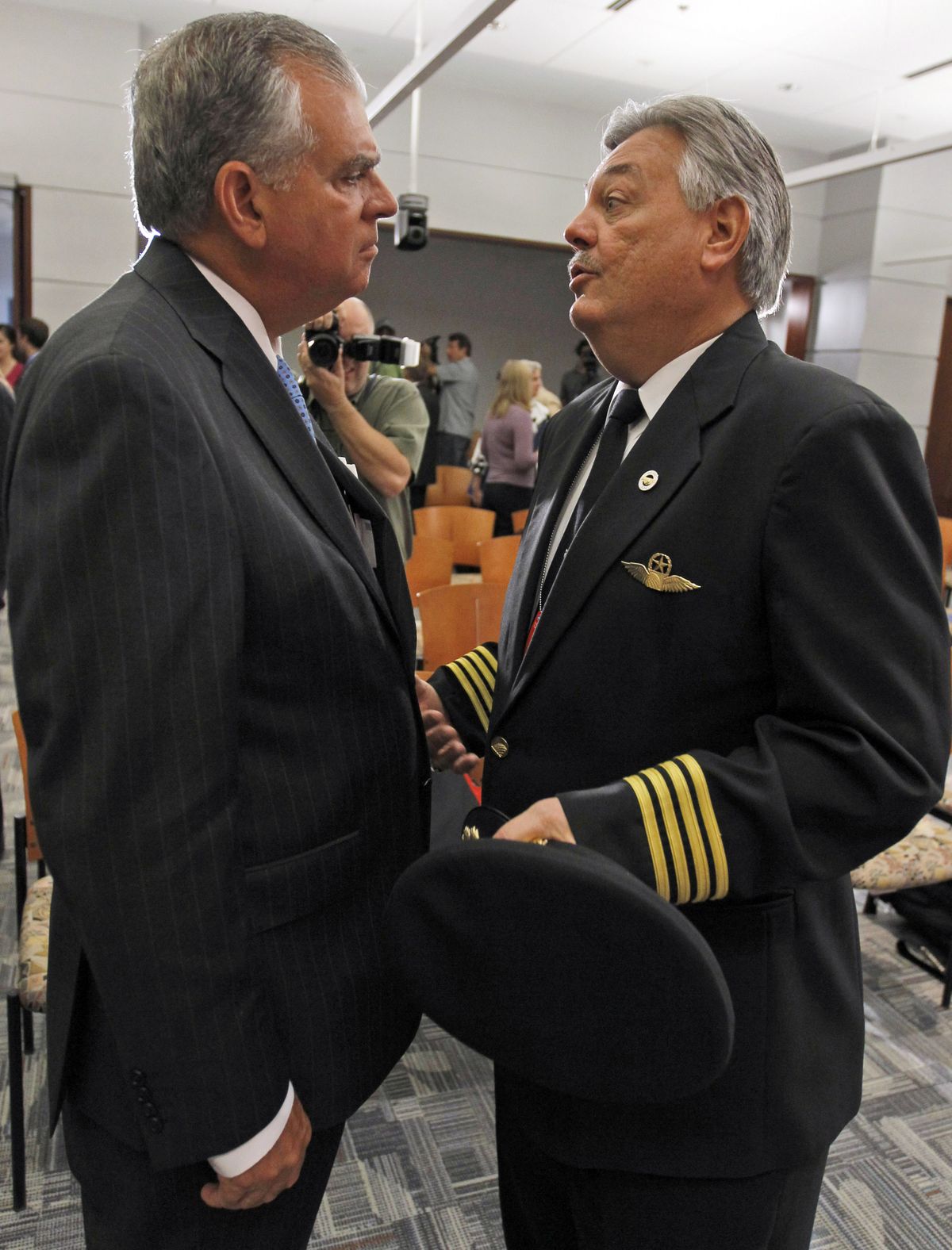New rules would govern airline pilots’ work hours
FAA’s proposal aims to prevent fatigued crews from making errors

WASHINGTON – Some airline pilots would fly fewer hours and others would fly longer under a government proposal Friday to help prevent dangerous fatigue.
The Federal Aviation Administration plan, months away from becoming final, would set different requirements based on the time of day, number of scheduled flight segments, flight types, and time zones. Pilots would get nine hours of rest between workdays, an increase of an hour.
Pilots have complained that the current eight-hour rest period, which begins as soon as they leave the plane, often means only a few hours of sleep.
The proposal would also bar airlines from scheduling pilots to be on duty – a combination of being at work ready to fly or in the cockpit flying – longer than 13 hours in a 24-hour period, three hours less than current regulations. However, airlines would be allowed to schedule pilots who start their workday between 7 a.m. and 1 p.m. for as much as 10 hours of flying time – two more hours than currently allowed.
In updating decades-old rules for work schedules and developing more flexible, scientifically based standards, the government is trying to prevent tired pilots from making errors that can cause crashes.
Nonetheless, the increase in work hours for some pilots – an idea promoted by airlines – immediately drew opposition.
“Completely unsupported by scientific evaluation,” said pilot Jeff Skiles, the first officer on the US Airways plane that ditched into the Hudson River off New York City after a bird strike last year. The handling of that emergency by Skiles and the flight’s captain, Chesley “Sully” Sullenberger, has won praise as a sterling example of professionalism.
“The insidious problem of pilot fatigue cannot be fought by increasing the amount of time pilots fly in the cockpit,” said Skiles, who has been lobbying for stronger safety regulations on behalf of Coalition of Airline Pilot Associations, whose members are pilot unions.
To Transportation Secretary Ray LaHood, the proposal represents “a significant improvement in air travel safety.”
The Air Transport Association, which represents major airlines and cargo carriers, said in a statement that it supports new rules “that are science-based, effective and crafted to truly improve safety.”
The FAA and the Transportation Department have worked on the proposal for the past 15 months. The impetus was the crash of Continental Connection Flight 3407 near Buffalo, N.Y., in February 2009 that killed 50 people.
A National Transportation Safety Board investigation found that both pilots on the flight were probably suffering from fatigue, although that wasn’t a direct cause of the accident.
Pilots now can be scheduled for up to 16 hours on duty – being at work, ready to fly – and up to eight hours of actual flight time in a 24-hour period, with a minimum of eight hours for rest in between.
The rules don’t take into account that it can be more tiring for regional airline pilots to fly five or six short legs in six hours than it is for a pilot with a major airline to fly eight hours across the ocean with only one takeoff and landing. Takeoffs and landings are usually the most strenuous part of flying.
The last six fatal airline accidents in the U.S. have involved regional airlines. Pilot performance was cited as a factor in four of them.